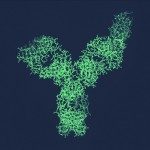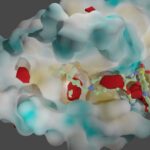Lien vers Pubmed [PMID] – 24513148
Thromb. Res. 2014 Jun;133(6):1105-14
INTRODUCTION: Activated protein C (APC) is the central enzyme of the anticoagulant protein C pathway. Low concentrations of APC circulate in plasma and are believed to contribute to the maintenance of a normal haemostatic balance.
MATERIALS AND METHODS: We have used a structure-based virtual screening approach to discover small drug-like molecules that inhibit the interaction between APC and its substrate FVa through inhibition of a predominant APC exosite, known to be involved in FVa substrate binding. We have combined in silico selection with functional screening and direct binding analysis to identify novel molecules and to ascertain and characterize the inhibition of the interaction between APC and FVa.
RESULTS: We have identified a number of novel molecules that bind to APC and protein C with Kd values in the range of 10(-3)- 10(-5)M. Inhibition by these molecules is incomplete, which most likely reflects the extended surface that is involved in the interaction between APC and its substrates. Direct binding of hit molecules to variant APC molecules that were mutated in the targeted binding site revealed that several of the molecules presented a 100-500 fold lower affinity for the variant molecule, suggesting that these molecules indeed bind the exosite of APC.
CONCLUSIONS: The protein-protein interaction inhibitors discovered here, could function as starting molecules for further development of small molecules with anti-APC properties. Such molecules may be of clinical interest, in particular in individuals where thrombin formation is compromised and the haemostatic balance is tipped towards bleeding tendencies, such as in haemophilia A.

